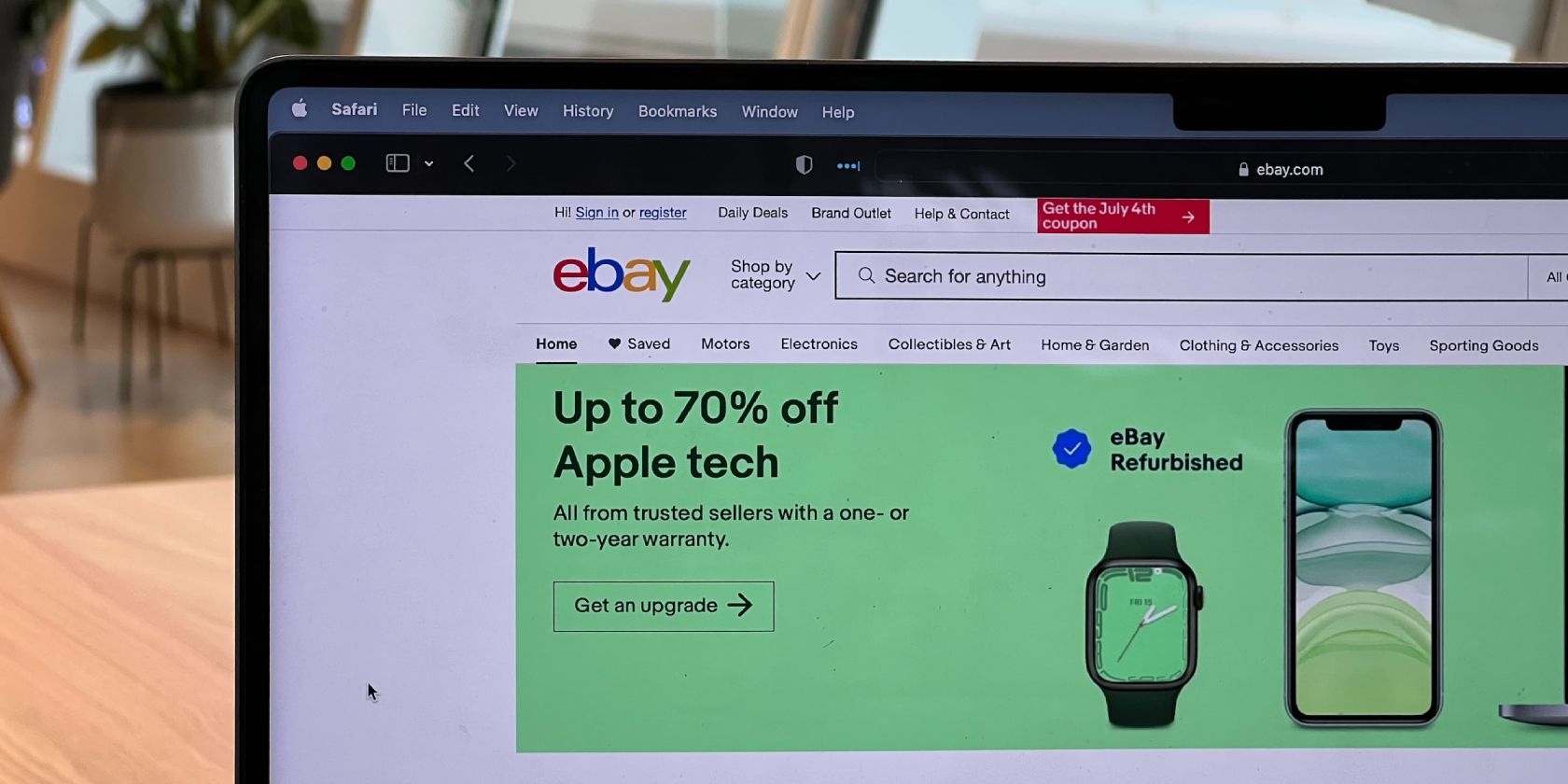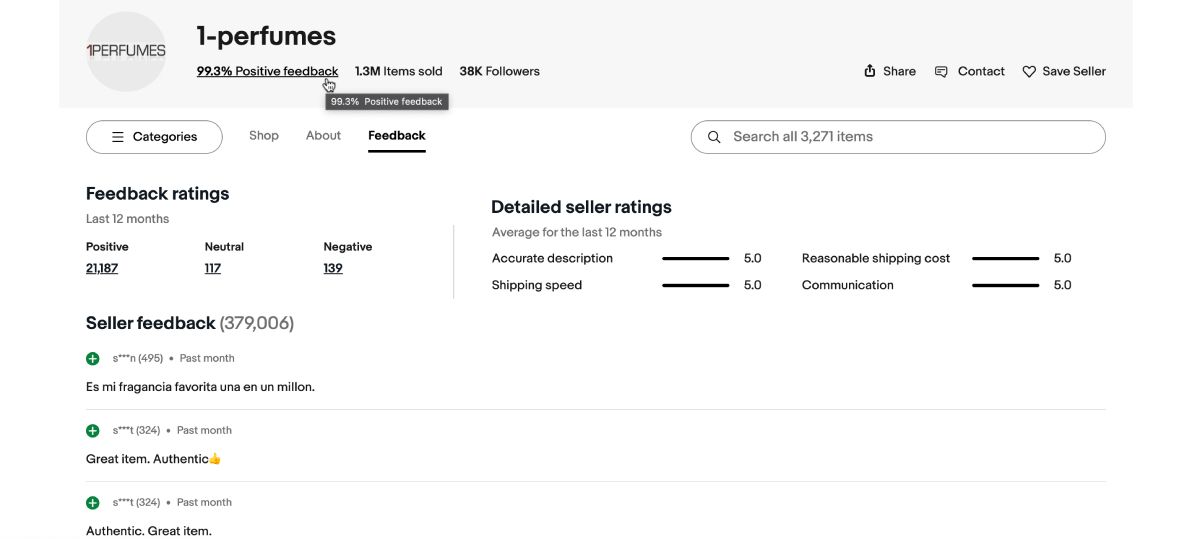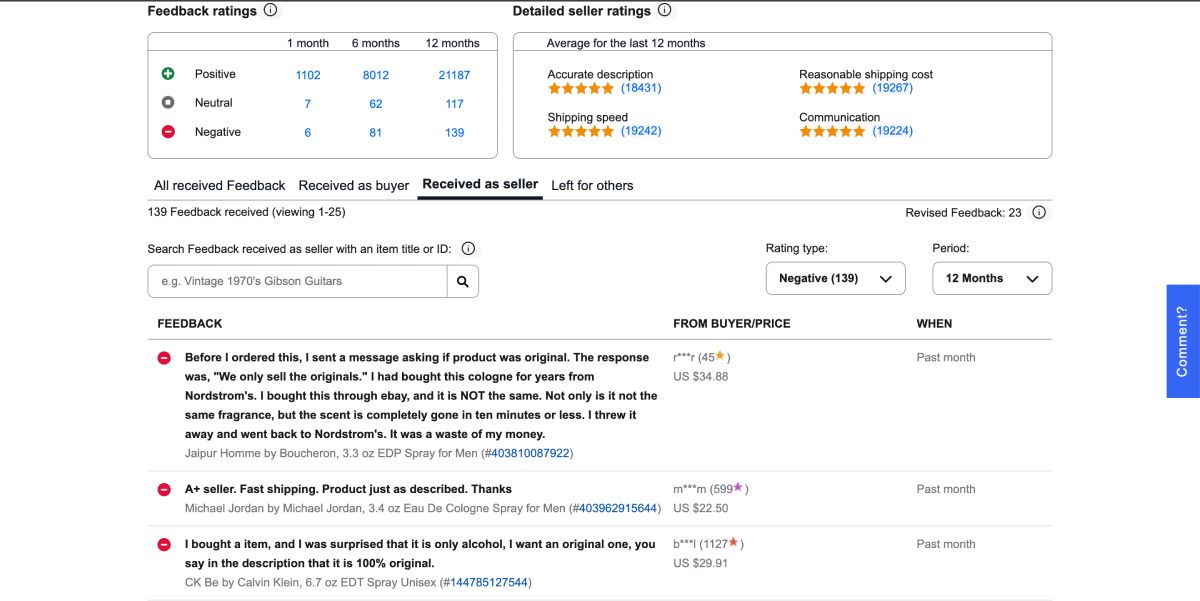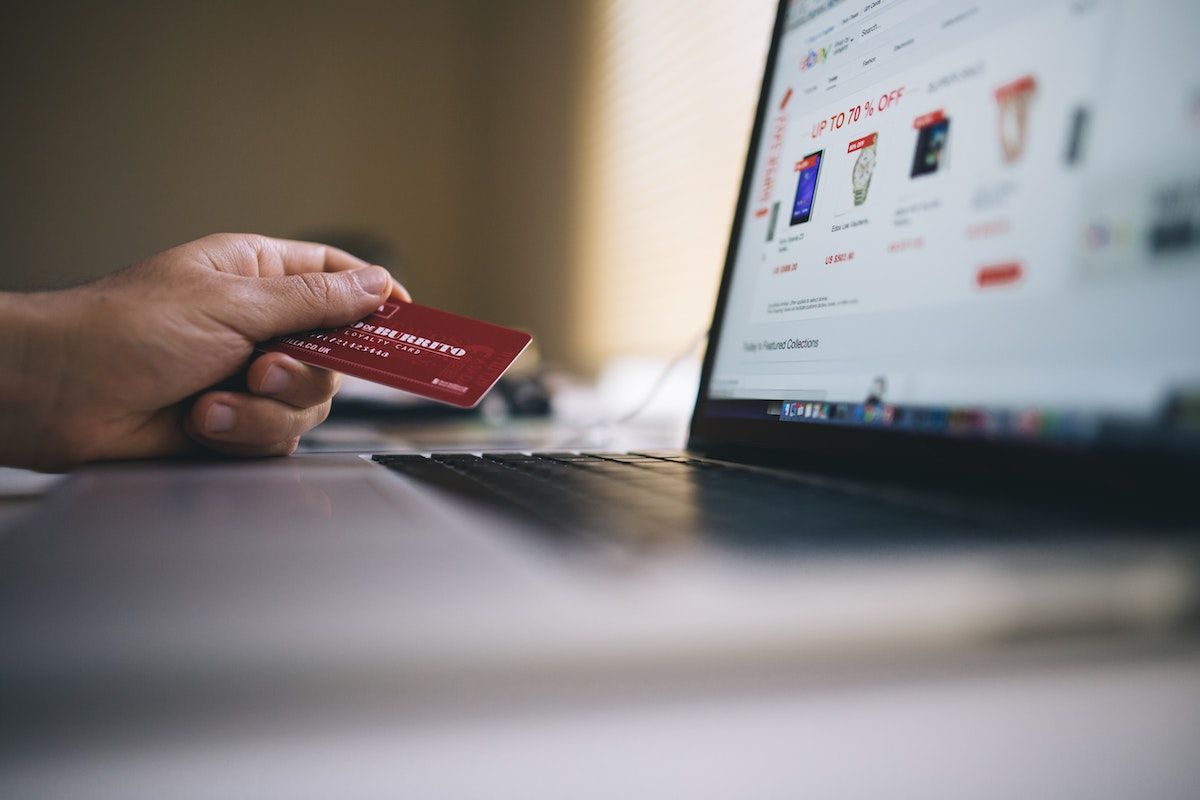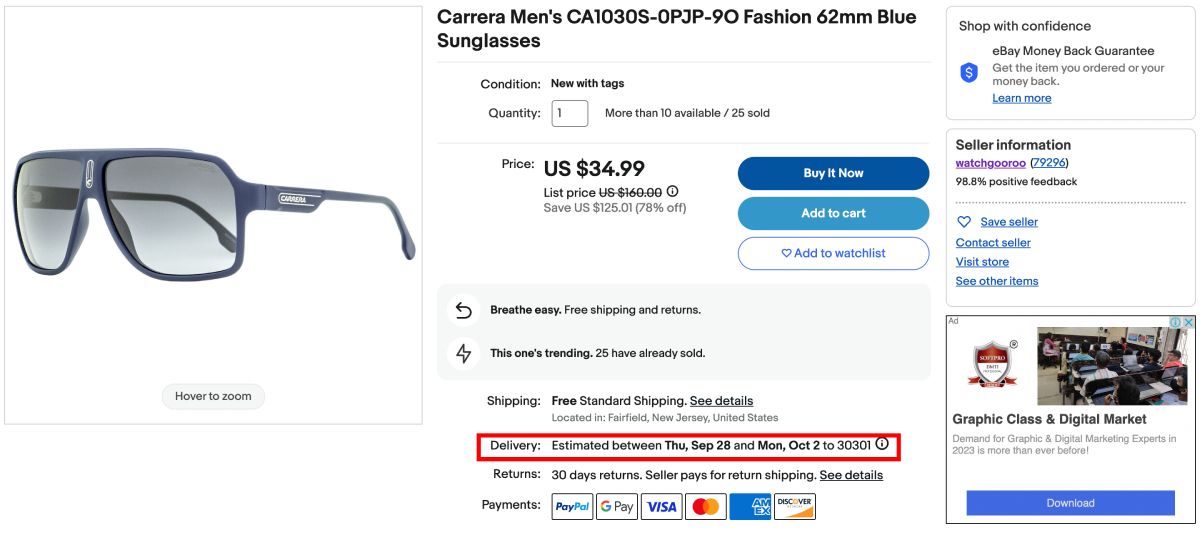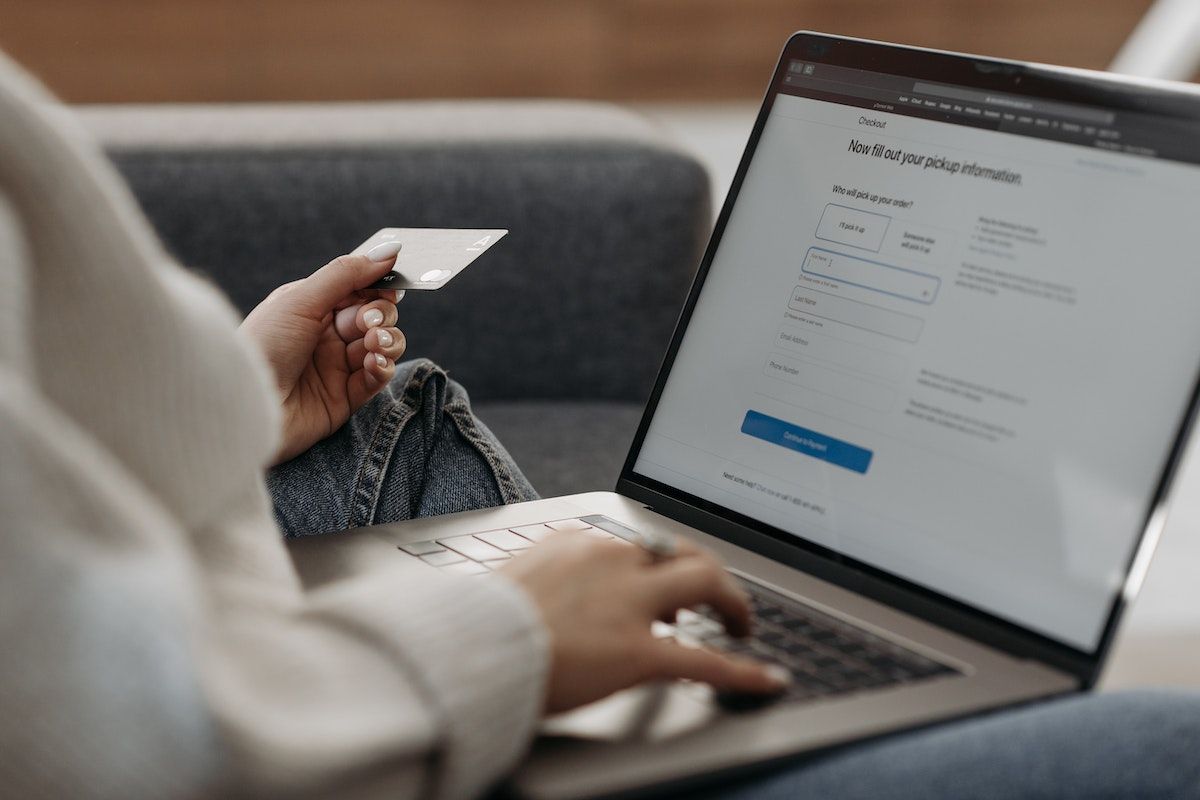eBay is one of the most popular shopping platforms at present. The abundance of products and sellers makes it easy for shoppers to find something they like on the platform. However, given that not every seller on eBay is genuine, it’s important to do your research and exercise caution, so you don’t end up spending your hard-earned money on fake products.
We’ll explore a few tips to help you spot genuine sellers and make informed buying decisions.
1. Check the Seller’s Feedback Rating
Before you purchase a product, make sure to navigate to the seller’s page on eBay to check their feedback ratings. A higher feedback rating indicates that the seller is likely to be reputable. Conversely, if you see a low rating, it could suggest potential problems with the products sold by the seller, issues with customer service, and the like.
Also, be sure to check the number of followers the seller has on eBay. A substantial following typically indicates a more satisfied customer base, which may be a testament to the seller’s reliability. If the seller has a few feedback ratings and no followers, it’s important to investigate further before purchasing the item.
2. Read Negative Reviews
If you’re not convinced about the seller’s authenticity from the feedback rating alone, your next step should be to read the negative reviews left by past customers. Keep in mind, though, that if the seller has been selling multiple products for several years, they are bound to have at least a few negative reviews.
Some negative reviews may also be left by competitors to bring down the seller’s rating, so it’s important that you’re able to differentiate between genuine and fake reviews. If the overwhelming number of reviews left for the seller are negative, you’re better off shopping from a different seller.
When checking reviews, remember that some shoppers may have unreasonable expectations, leading to negative reviews. These reviews don’t convey the seller’s authenticity or the quality of their products. But if you spot consistent negative reviews that mention quality issues or a lack of communication from the seller, that’s a major red flag you shouldn’t ignore.
3. Check the Seller’s Inventory
Another thing you can do to verify a seller’s authenticity is to check their inventory. Typically, fraudulent sellers will create an account and raise their rating by selling cheap items for a while. Once they have enough positive reviews and a high feedback rating, they add the more expensive, inauthentic products.
This way, even if they get a few negative reviews for the higher-priced items, the positive reviews and higher ratings that were left for the cheaper items will keep their overall rating high. So, make sure to take a look at the seller’s inventory and review if they are selling any odd, low-priced items.
For instance, if you spot someone selling expensive watches and cheap stuffed toys, it’s a good idea to further investigate specific reviews or look for another seller selling a similar item.
4. Investigate Products With Lower-Than-Normal Prices
While the whole point of shopping on websites like eBay is, so you can score deals, it’s important to remember that products with unusually low prices can be a sign of a potential scam. When shopping online, if you come across a product at a price that seems too good to be true, it likely is.
Before you go ahead and pay for an item on eBay, use a price comparison platform to check the average market price for similar products. If the product you want to purchase is priced at a fraction of the usual cost, you’re better off looking elsewhere.
5. Check for Stock Photos
Sellers on eBay get to upload their own photos of the items they intend to sell. It's best to evaluate these photos before you purchase a product. Typically, sellers use stock photos if they don’t want to disclose the condition of the product. Legitimate sellers will use the actual photos of the item they’re selling, allowing you to verify its authenticity and condition.
If you’re unsure whether an image is a stock photo, you can use a reverse image search app to verify its origin. Similarly, it’s a good idea to read the product description before making a purchase. Sellers who list authentic products typically provide accurate and detailed descriptions. If the description is incorrect or seems too generic, it could be a potential red flag.
6. Review the Shipping Time
When evaluating the authenticity of products on eBay, don’t forget to consider the mailing time. A hallmark of reputable sellers is timely delivery. Typically, something that is shipped to you from within your country should not take over two weeks to arrive, unless it is a large shipment.
But if you see numerous reviews that mention shipping delays, that could signal a problem with the vendor. When evaluating products, take into consideration how long similar products from other sellers take to ship. If the shipping time for the product you want to purchase is longer than usual, you may be dealing with a fake seller.
7. Contact the Seller
If you’re looking to buy something but aren’t able to verify its authenticity or have any other concerns, try engaging with the seller on eBay. Effective communication from the seller’s side won’t just answer your queries, but will also indicate how professional and reliable the vendor is.
A legitimate seller will respond fairly quickly and provide you with helpful answers. In contrast, a seller who doesn’t respond on time or provides inaccurate or evasive answers could signal trouble.
8. Pay Through eBay
eBay offers a money-back guarantee that covers the purchase price plus shipping fee for several products on its platform. This program ensures hassle-free returns and quick refunds. However, to be covered by this guarantee, you’ll need to pay for the item through eBay. So, if a seller reaches out to you and offers a discount for completing the transaction outside of eBay, be cautious.
This is a common tactic used by fraudulent sellers to evade the platform’s buyer protection terms. What’s more, paying through eBay allows you to make your payment through a secure channel, reducing your exposure to financial risks.
Pay Attention to Have a Safe Shopping Experience on eBay
Given how rampant fraudulent sellers and fake products are, it’s important to stay vigilant and do your research when shopping online. Following the above-mentioned tips will allow you to enjoy the convenience offered by eBay while also having a secure shopping experience on the platform.

